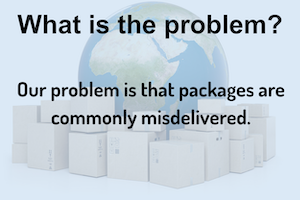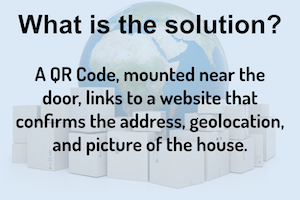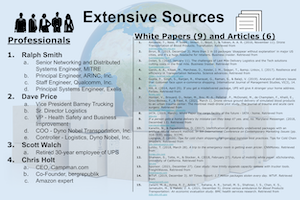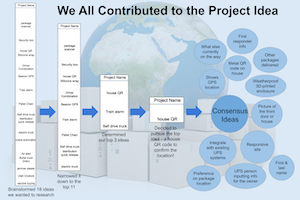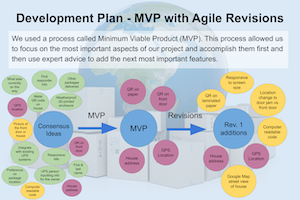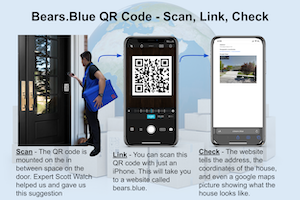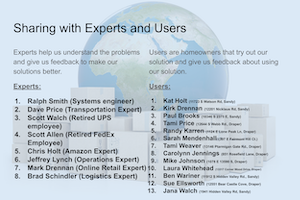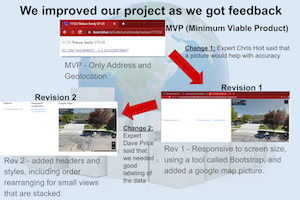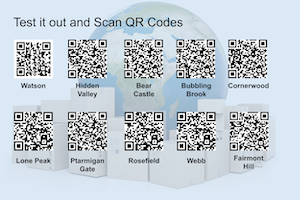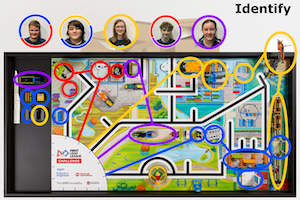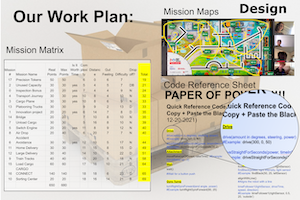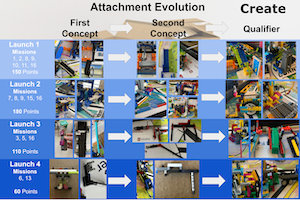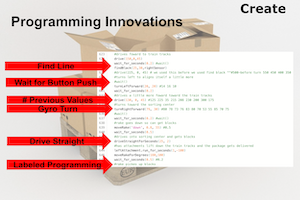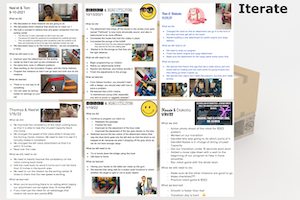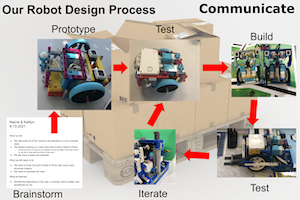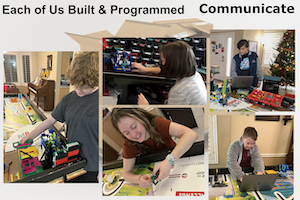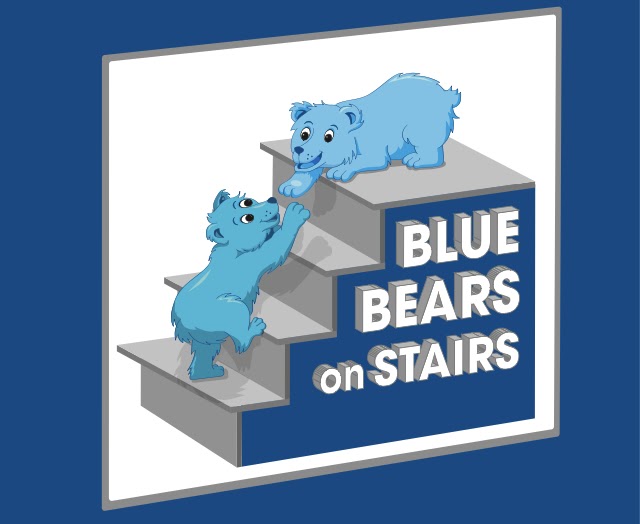
Welcome Judges!
We are team 3553 - Blue Bears on Stairs
We have collected various files for you to review after our judging session. We really appreciate your time and hope you find our posters, notebooks and slides as fun as we found them to make.
Learn about our:
Innovation Project: Home Verifier For Deliveries
Summary
QR Code
Website
Project Description
A homeowner mounts the QR Code to the door. When a delivery driver comes to their front door, they will scan the QR Code, leading them to the bears.blue website. This will confirm whether or not they are at the right place, by telling them the address, the geolocation, and showing a Google Maps street view.
Poster
Poster Summary

We filed a patent application on our invention and we are official inventors.
One sentence solution statement: A QR code, mounted near the door, links to a website that confirms the address, GPS location and picture of the house.
We had exceedingly clear research gathered from extensive sources, including 4 professionals, 9 White Papers, and 6 articles.
We used culling and consensus to create a purposeful project. Everyone could brainstorm and research any topic they wanted, and then we decided as a team which one(s) to pursue until we came down to our final idea. After we decided on our project, we came up with a bunch of possible features that we would like our project to have.
We looked at our list of all possible features and determined what were the most basic features of our project needed to be (aka the Minimum Viable Project or MVP). We then executed the MVP before starting to make revisions.
How the project works: Scan - The delivery person sees the QR code mounted on the doorframe. They scan it with a phone or other scanner. It takes them to our website, which shows the address, GPS location, and a google maps image of the house.
Our solution started as a piece of paper taped to a window. And as you can see in front of you, the QR code is sturdy and weatherproof. The website has improved because it is responsive, has computer readable code, and includes a google maps street view picture of the house.
Robot Design: Efficiency & Prototype-Test-Build-Test-Iterate
Summary
Robot Name
Robot Picture
Robot Strategy Summary
Bob

Our mission strategy was to be efficient. We wanted to get as many points as we could in the least amount of time. Having an exceedingly clear mission strategy affected how we built, programmed, and managed our time.
Poster
Poster Summary
Two years ago, our team chose to switch to python programming. We were total Python rookies that year, but now this year after many hours of tutorials and practice, we feel much more confident. We are still learning new things about programming every day.
We split up into 4 small groups, each group of 2 was responsible for their own robot run. The robot runs, shown in different colors are: Blue, Yellow, Red, and Purple. We all became experts as we each worked on the building and coding for the robot run that we were responsible for.
We made a mission matrix to rate missions based on multiple aspects like the distance from launch and the complexity of the mission. We also created multiple possible mission maps and picked the one that was the most efficient. We use a code reference paper that we call the Paper of Power.
This year, we decided to not use a modular robot. We found that we could have our transitions be just as fast using quick connection points, and that not using a modular design allowed us to be more efficient with the parts we use. We added a rack and pinion that has dual power for linear or rotational motion.
These are some features from our robot game from each launch. For example, in Launch 1, we do three things at the same time. The robot drops off the package, fixes the railroad tracks, and lifts the cargo.
These are some of our code’s innovative features, which are the functions we’ve created such as: gyro turns, line align, find-line, line follow, and master program. When we test missions, we use a wait-for-a-button-push function and the light matrix to help us isolate problems in the code.
We have tons of evidence of our robot and code testing in our Engineering Notebook's 82 pages. Each meeting, we wrote what we did, what we still needed to do, and what we learned. Here’s a small sample of what we’ve done from our engineering notebook.
Our robot design process included many clear steps. First, we brainstormed, then prototyped the robot. Next, we went through several test, build, test, iterate cycles. Our robot, Bob, has just gotten better and better with time.
Core Values
Core Value
How We Live It
Discovery
At the STEM Expo (an outreach event), I got the chance to talk to people about lego robotics! Talking to all the people about the robot was a cool experience and maybe getting them interested in FLL. My favorite part of that whole day was talking to a lot of people and showing them how we do the missions with the robot.
-Thomas
Inclusion
When we were deciding what the skit would be about some people weren’t big on some of the ideas: like a certain type of surgery would hit too close to home or they didn’t want any animal cruelty. We had to adapt our ideas so that we didn’t disrespect or make anyone uncomfortable about it and when we needed to we used consensus. In the end we came up with something that made everyone happy and content. I’m really glad that our team is able to adapt and use consensus so that everyone in the team is happy.
-Dakota
Impact
Our team got to mentor the Techic Titans, a team that has never done FLL before! We answered a ton of their questions about how judging sessions went, clarified robot game rules, and gave them tons of general tips and encouragement! They had already come up with so many amazing ideas, it was really awesome to see what they came up with and have fun. It showed me that I really can have an impact on the community, inside and outside of FIRST!
-Kassie
Innovation
We had to innovate a lot this season. For example, both within our project and robot game. For example when I was creating the forklift attachment I had no idea what would work but after creating prototypes of different ideas I was able to come up with a design that is both very efficient and consistent.
-Kaitlyn
Teamwork
Throughout the year, we have worked with the teams Beehive Robotics and The Musketeers to assist them, as they are both first year teams. We learned new ideas from them while they learned the ropes from us. By working together and putting all of our efforts together, we all became better teams.
-Neş'et
Fun
We LOVE to have fun together! A definite highlight would have to be the 2.5 hour simulated space mission we did! It really showed us how every person brings something different to the table to create a successful mission (or FLL season).
Other Files
Icon
Filename
Description of the File
This contains all of our robot game code for this season!
Here you can see all of our Engineering Notebook entries.
Here are all of the posters we used in our judging presentation.


